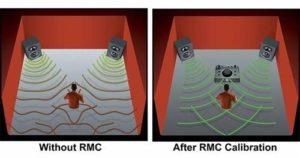Setting the level of professional monitor speakers is a must-to-learn skill for sound engineering experts. A well-calibrated speaker system ensures that you have pro-results in recording sounds for Film & Television. As easy as it sounds, calibrating monitor speakers is a rather technical task. However, with proper guidance and process, it is easy to have professional results. If you are looking for a guide on how to calibrate speakers, here is everything you need to know:
Why calibrating your system is important?
There are many benefits that make calibrating systems important. Here are some important features that you need to know:
Headroom: The importance of Headroom in music production needs no introduction. With calibrated speakers, you get more headroom in your mix which ultimately increases your limit to add more dynamic range to your mix.
Standardization: If you have well-calibrated rooms you can easily switch from one room to another.
Better Mix: If you have calibrated speakers you do not face problems while mixing dialogues levels with speaking levels. You can easily mix through the ear. When you mix with headroom you get a better sound mix without any ducking for any dialogue.
Essential for perfect calibration:
Three key elements that you need to calibrate perfectly include Speakers, Monitor Controller & SPL meter.
If you are considering mixing through headphones quit the idea right away. Prolonged use of headphones may cause ear fatigue. Using speakers is far more efficient & result oriented. You must arrange for two speakers with separate volume pod.
Monitor Controller:
Also known as Monitor Mixer this machine helps you in adjusting the speakers.
SPL Meter:
This application helps you in calibrating your systems. You can choose separate applications for your devices. SPLnFFT is one great app for iPhones. However, for better results, you must use a dedicated professional SPL meter.
How to Calibrate your System:
Calibrating your system is a short & easy process if you know the right way to perform it. To start it, you need to choose a -20 dBfs RMS pink noise and play it through the DAW using any signal generator. The reason behind choosing -20 dBfs RMS pink noise is its ability to match the normal conversational dialogue level perfectly. When you set your dialogue level at -20 dBfs, you get additional 20dB headroom in your mix. Now you have a mix where the average dialogue level rests at -20dBfs & sounds like explosions can reach as far as 20dB.
- Level for calibration:
The level for calibration depends upon the media type you are mixing. If you are mixing for television the ideal level is 79 dB SPL, whereas for film media mixing (that needs calibrating in big spaces like theaters) the ideal level is 85 Db SPL. However, some people also use 75 dB SPL for mixing, but not for track laying or designing sound.
- Higher Calibration Number:
If you choose a higher Calibration number you get more headroom above the dialogue and quieter dialogue mix. In simple words, an 85 Db SPL will deliver better results than 75 dB SPL. It 85 dB SPL is much louder than 75 dB SPL and hence produces quieter mixes. However, the dialogues sit at the best conversational level which delivers a dynamic range with the difference between the dialogue & other loud sounds.
 DAW Calibration:
DAW Calibration:
- Open your DAW
- Choose -20 dBfs RMS pink noise & play through one speaker at a time.
- Place an SPL meter in the mixing position, now set it to “C weighting and slow response time”.
- Adjust 1st speaker till you achieve 79 dB SPL (Small studio) and 85 dB SPL (Large studio).
- Continuing this process for the second speaker.
- Mark the fader position in the mixer or Controller.
System Calibration:
- Open the browser.
- Play -20 dBfs RMS pink noise
- Place an SPL meter in the mixing position, now set it to “C weighting and slow response time”.
- Adjust 1st speaker till you achieve 79 dB SPL (Small studio) and 85 dB SPL (Large studio).
- Mark output level on the PC or MAC.
Isn’t it easy? If yes, try it out and get your hold on Audio Mixing and Mastering calibration of your systems.



